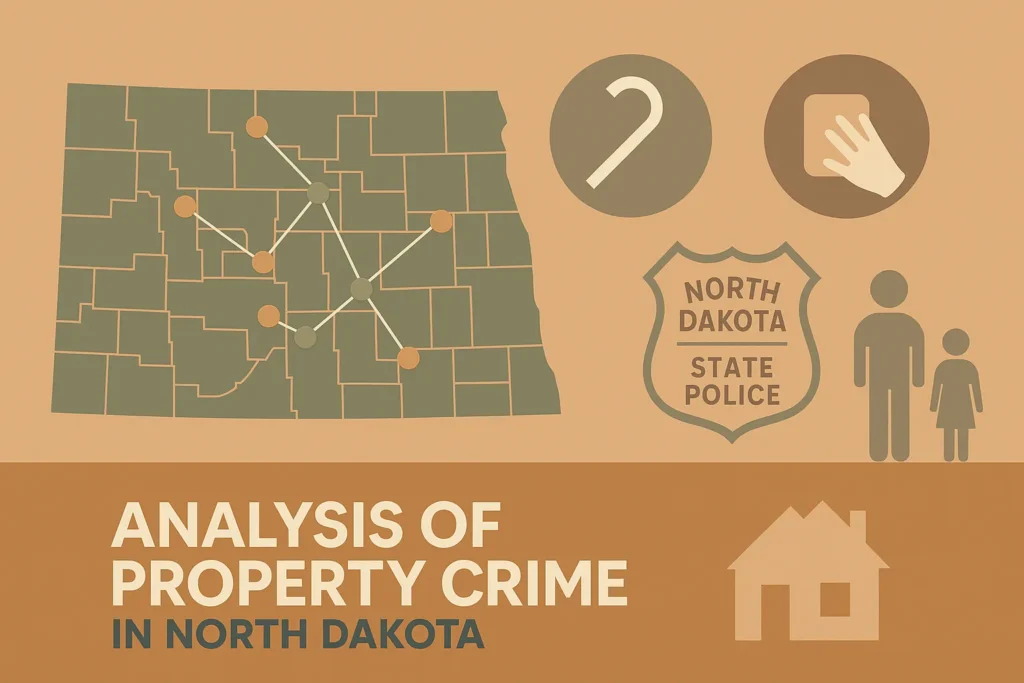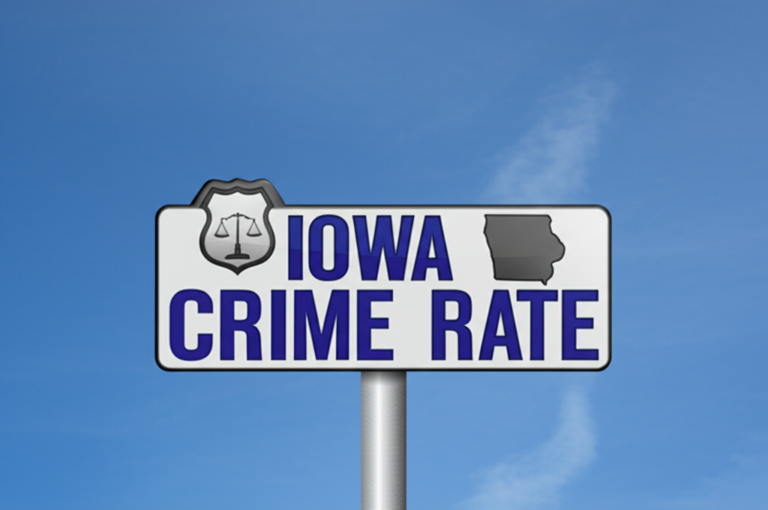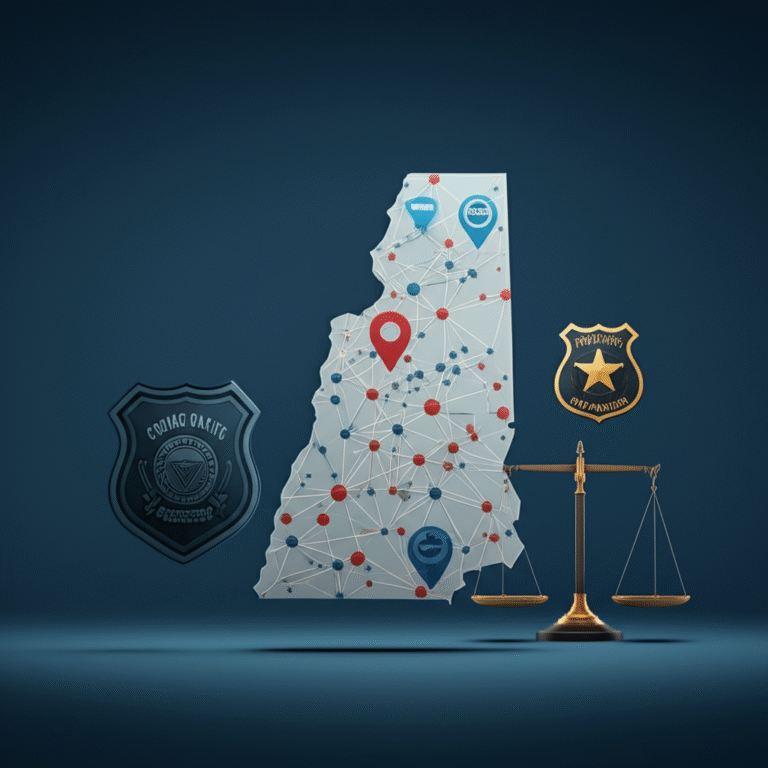North Dakota Crime Rate: In-Depth Analysis and Regional Crime Insights
Have you ever wondered how safe North Dakota really is? The state exhibits a distinct pattern when it comes to crime, which reveals unique social and legal challenges. Understanding these trends requires delving into the crime statistics, exploring how law enforcement and the criminal justice system respond, and appreciating the broader social issues at play. Public safety in North Dakota evolves through a complex interaction of these factors.
This article provides an insightful journey through the state’s crime data, highlighting how different forms of crime affect communities and influence legal action and justice. For those engaged in policy, criminology, or community welfare, this overview offers a thorough foundation to understand North Dakota’s specific crime landscape and the implications for its future.
- North Dakota exhibits unique crime dynamics compared to national averages, with distinct patterns in violent and property crimes.
- Crime statistics are crucial for understanding public safety, law enforcement strategies, and community wellbeing.
- This overview integrates crime data, analysis, and comparisons essential for public policy and criminal justice stakeholders.

Comprehensive Crime Rates in North Dakota
Exploring the full scope of crime statistics in North Dakota reveals over 17,000 incidents reported annually. The total crime rate stands at 22.08 offenses per 1,000 residents, showing a community grappling mostly with non-violent offenses. Among these, property crime is far more prevalent than violent crime, highlighting the nature of threats residents face. Specifically, violent crime rate hovers at 2.67 per 1,000, indicating relatively low levels of personal safety risks compared to property-related offenses.This difference sheds light on the challenges law enforcement faces—not only in addressing physical danger but also in managing widespread theft and damage.
The following table illustrates the reported crime distribution, offering a snapshot useful for those studying criminology or working in the justice system.
- Total crimes reported are over 17,000 with a crime rate of 22.08 per 1,000 residents.
- Violent crime rate stands at 2.67 per 1,000, while property crime is significantly higher at 19.41 per 1,000.
- Analyzing these rates offers insight into the challenges of crime prevention and public safety management.
| Crime Category | Total Cases Reported | Rate per 1,000 Residents |
|---|---|---|
| Total Crimes Reported | 17,313 | 22.08 |
| Violent Crime | 2,096 | 2.67 |
| Property Crime | 15,217 | 19.41 |
Detailed Violent Crime Breakdown in North Dakota

Looking deeper into violent crime reveals a range of offenses with varying impact. In North Dakota, this category includes murder, rape, robbery, and assault. Of these, assault is the most common, with 1,475 cases reported, accounting for the majority of violent incidents. The risk of falling victim to violent crime is roughly 1 in 374 residents, a figure reflecting the comparatively low but significant threat to personal well-being.
Each crime type demands distinct responses from public safety officials and the criminal justice system, shaping policies and preventive tactics. Below, the table breaks down the reported numbers and rates per 1,000 residents, offering valuable insight for individuals interested in safety or legal frameworks.
- Violent crimes include murder, rape, robbery, and assault with assault being the most common offense.
- Chances of violent crime victimization in North Dakota are approximately 1 in 374 residents.
- Understanding these components informs law enforcement and public safety initiatives.
| Violent Crime Type | Reported Cases | Rate per 1,000 Residents |
|---|---|---|
| Murder | 26 | 0.03 |
| Rape | 392 | 0.50 |
| Robbery | 203 | 0.26 |
| Assault | 1,475 | 1.88 |
Violent Crime Comparison: North Dakota Versus National Rates
Comparing North Dakota’s violent crime rates with national figures reveals some encouraging signs about the state’s relative safety. With a violent crime rate of 2.67 per 1,000 residents, North Dakota falls well below the U.S. national median of 4.0, indicating fewer instances of violent acts per capita. When focusing on specific offenses, murder rates are markedly lower here than in most states.
However, rape statistics are slightly elevated compared to the national average, highlighting an area requiring focused attention. Other violent crimes like robbery and assault maintain rates beneath national medians, supporting claims that North Dakota is comparatively secure. Such comparisons inform criminal justice strategies and enhance understanding of the state’s public safety landscape. For additional details on national statistics, resources like the FBI’s UCR Program can be invaluable.
- North Dakota’s violent crime rate (2.67) is markedly lower than the U.S. national median (4.0).
- Murder rates are below national averages, while rape rates are somewhat higher.
- Robbery and assault rates fall below national median levels, supporting comparative safety claims.
| Crime Type | North Dakota Crime Rate | National Median Rate |
|---|---|---|
| Violent Crime | 2.67 | 4.0 |
| Murder | 0.03 | 0.06 |
| Rape | 0.50 | 0.38 |
| Robbery | 0.26 | 0.67 |
| Assault | 1.88 | 2.64 |
Analysis of Property Crime in North Dakota

When it comes to property crime in North Dakota, theft emerges as the dominant type, with almost 11,000 reported cases. This high number reflects ongoing challenges related to personal and community security. Other significant contributors to the property crime landscape include burglary and motor vehicle theft, which collectively shape the over 15,000 offenses noted statewide.
For residents, the odds of experiencing property crime are approximately 1 in 52, reinforcing concerns about safeguarding possessions and homes. These statistics underscore the importance of effective criminal law enforcement and practical safety measures to curb this prevalent issue. The accompanying table highlights the breakdown of property crimes and their corresponding rates per 1,000 residents.
- Property crimes dominate with theft as the most prevalent offense, accounting for nearly 11,000 cases.
- Burglary and motor vehicle theft contribute significantly to the property crime rate.
- Residents face a roughly 1 in 52 chance of experiencing property crime, indicative of prevalent security concerns.
| Property Crime Type | Reported Cases | Rate per 1,000 Residents |
|---|---|---|
| Burglary | 2,509 | 3.20 |
| Theft | 10,982 | 14.01 |
| Motor Vehicle Theft | 1,726 | 2.20 |
Comparing Property Crime Rates Between North Dakota and the United States
When juxtaposing North Dakota’s property crime rates with those across the United States, a subtle yet meaningful picture emerges. The state exhibits a slightly elevated overall property crime rate of 19.41 per 1,000 residents compared to the national median of 19.0. Examining specific crime types, burglary rates are notably higher in North Dakota, suggesting local hotspots or challenges in burglary prevention. Meanwhile, rates of theft and motor vehicle theft are somewhat lower than national averages, indicating varying crime patterns.
This nuanced comparison yields valuable insight for assessing the effectiveness of security and public safety measures in the region. The data table below illustrates these differences clearly. Further analyses like those available at the Bureau of Justice Statistics deepen understanding of such trends.
- Property crime rates in North Dakota (19.41 per 1,000) slightly surpass the national median (19.0).
- Burglary is higher locally than the national average, while theft and motor vehicle theft are somewhat lower.
- This nuanced comparison helps in assessing regional security effectiveness.
| Property Crime Type | North Dakota Rate | National Median Rate |
|---|---|---|
| Burglary | 3.20 | 2.51 |
| Theft | 14.01 | 13.47 |
| Motor Vehicle Theft | 2.20 | 3.19 |
Crime Density: Spatial Distribution of Crimes in North Dakota

Understanding the crime density in North Dakota helps grasp how geographic and population factors influence safety. With about 17 crimes occurring per square mile, the state’s crime density is below the national median of 26.5. This lower figure echoes North Dakota’s relatively sparse population and vast rural areas, which typically experience fewer concentrated crimes than urban centers. Such spatial analysis proves vital for law enforcement when deciding how to distribute resources effectively and for urbanization planning to improve community resilience. The table below offers a concise comparison that reflects these geographic realities.
- North Dakota has a crime density of 17 crimes per square mile, less than the national median of 26.5.
- Lower crime density reflects lower population density and geographic factors.
- Crime density analysis aids law enforcement resource allocation and urban planning.
| Location | Crimes per Square Mile |
|---|---|
| North Dakota | 17 |
| National Median | 26.5 |
Safest Cities in North Dakota
Some cities in North Dakota stand out for maintaining remarkably low crime levels. Edmore leads the list as the safest city, showcasing a model of strong community safety and crime prevention. Other cities like Galesburg, Kensal, and Driscoll also rank highly, reflecting effective local policing, active social institutions, and community trust. These environments promote a sense of security and encourage cooperative efforts between residents and officials. Below is a table listing the top ten safest cities, highlighting the places that exemplify positive public safety achievements.
- Edmore ranks as the safest city based on crime metrics.
- Other leading safe communities include Galesburg, Kensal, and Driscoll.
- These cities illustrate effective community policing and strong public safety structures.
| Rank | City |
|---|---|
| 1 | Edmore |
| 2 | Galesburg |
| 3 | Kensal |
| 4 | Driscoll |
| 5 | Marmarth |
| 6 | Oriska |
| 7 | Fort Ransom |
| 8 | Fort Yates |
| 9 | Fullerton |
| 10 | Flasher |
Popular Cities in North Dakota and Crime Data Accessibility

North Dakota’s larger urban centers like Fargo, Bismarck, and Grand Forks serve as population and economic hubs. However, publicly accessible crime data for these popular cities often remains limited or unavailable, complicating efforts to fully grasp safety levels. This gap in transparency affects how residents perceive safety and how policymakers allocate resources. The table below lists some of these cities with an indication of their crime data availability. Understanding crime dynamics in these urban areas remains crucial for effective public safety planning and carrying out meaningful social research.
- Includes major cities such as Fargo, Bismarck, and Grand Forks.
- Crime data availability varies across these urban centers and influences public perception and policy focus.
- Understanding crime in popular cities is vital for urban planning and safety strategies.
| City | Crime Data Availability |
|---|---|
| Bismarck | [city_crime_row city=”Bismarck” state=”North Dakota”] |
| Devils Lake | [city_crime_row city=”Devils Lake” state=”North Dakota”] |
| Dickinson | [city_crime_row city=”Dickinson” state=”North Dakota”] |
| Fargo | [city_crime_row city=”Fargo” state=”North Dakota”] |
| Grand Forks | [city_crime_row city=”Grand Forks” state=”North Dakota”] |
| Horace | [city_crime_row city=”Horace” state=”North Dakota”] |
| Jamestown | [city_crime_row city=”Jamestown” state=”North Dakota”] |
| Mandan | [city_crime_row city=”Mandan” state=”North Dakota”] |
| Mapleton – Harwood | [city_crime_row city=”Mapleton – Harwood” state=”North Dakota”] |
| Minot | [city_crime_row city=”Minot” state=”North Dakota”] |
| Valley City | [city_crime_row city=”Valley City” state=”North Dakota”] |
| Wahpeton | [city_crime_row city=”Wahpeton” state=”North Dakota”] |
| Watford City | [city_crime_row city=”Watford City” state=”North Dakota”] |
| West Fargo | [city_crime_row city=”West Fargo” state=”North Dakota”] |
| Williston | [city_crime_row city=”Williston” state=”North Dakota”] |
Crime Data Collection and Analytical Methodology

The accuracy of any crime analysis depends heavily on how data is collected and processed. In the U.S., crime data comes from over 18,000 local law enforcement agencies, providing an extensive foundation. These records are compiled and undergo systematic updates every year, ensuring that the data reflects the most recent realities. Analysts employ a robust methodology, including meta-analysis of millions of reported offenses combined with geospatial mapping to highlight crime hotspots.
This approach also accounts for discrepancies caused by underreporting and reporting errors, enhancing the overall reliability. Such detailed data processing advances the fields of criminology and public safety planning. More information on these methodologies can be explored at the Bureau of Justice Statistics website.
- Data originates from over 18,000 local law enforcement agencies across the U.S.
- Data undergoes rigorous annual updates and quality assurance processes.
- The methodology includes comprehensive meta-analysis of millions of reported crimes with geospatial mapping.
- Adjustments account for reporting inconsistencies and enhance national crime understanding.
Conclusion: Insights and Future Directions
The in-depth analysis of North Dakota’s crime statistics reveals a complex interplay between law enforcement, criminal justice, and societal factors. While the state enjoys lower violent crime rates compared to the national average, the prevalence of property crimes and specific issues like rape rates call for targeted legal action and community engagement. The role of public safety agencies, including the Federal Bureau of Investigation, is crucial in addressing these challenges. Moving forward, enhancing data accessibility and applying interdisciplinary approaches in criminology and social research will be key to developing effective strategies for crime prevention and ensuring justice for all residents of North Dakota.




